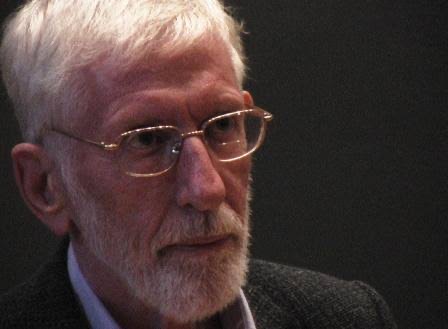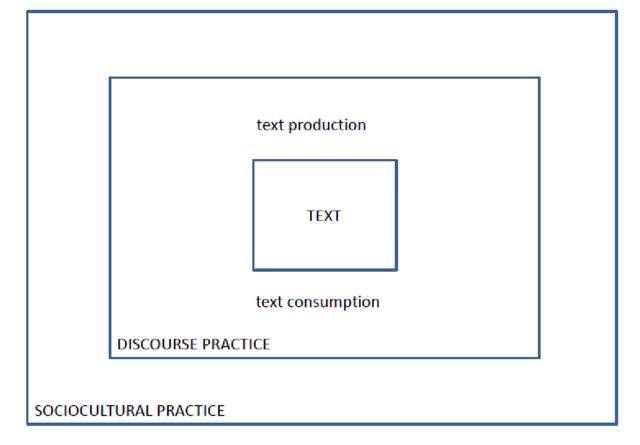TABLE OF CONTENT:
-
The Three-Dimensional Framework:
-
Key Concepts of the Norman Fairclough Method:
-
Applications of the Norman Fairclough Method:
-
Applying the Norman Fairclough theory to the Repunzle story and analyzing the gender perspective.
Introduction:

Discourse analysis is a field of study that examines how language is used to communicate and construct social meaning. It involves analyzing the structures, patterns, and functions of language use in a given context. One of the most prominent approaches to discourse analysis is the Norman Fairclough method, which offers a framework for studying the relationship between language and power. In this article, we will explore the Norman Fairclough method in detail and discuss its key concepts and principles.
What is the Norman Fairclough Method?
The Norman Fairclough method is a critical discourse analysis (CDA) approach that emphasizes the role of language in social and political power relations. It was developed by British linguist Norman Fairclough in the 1980s and has since been widely used in various fields, including sociology, politics, media studies, and communication studies. The method involves a three-dimensional framework that examines the textual, discursive, and social practices of language use.
The Three-Dimensional Framework:

The first dimension of the Norman Fairclough method involves analyzing the textual properties of language, such as grammar, vocabulary, and syntax. This dimension is concerned with the way language is used to construct meaning and convey ideology. The second dimension focuses on the discursive practices of language use, such as rhetorical strategies, narrative structures, and argumentation. This dimension examines how language is used to persuade, influence, and manipulate. The third dimension is concerned with the social practices of language use, such as power relations, social structures, and cultural norms. This dimension analyzes how language use reflects and reinforces social hierarchies and power relations.
Key Concepts of the Norman Fairclough Method:
There are several key concepts that underpin the Norman Fairclough method. These include:
-
Hegemony: This refers to the dominance of one social group over another through the use of cultural and ideological means. Hegemony is maintained through language use, which reinforces the dominant group's values and beliefs while marginalizing alternative perspectives.
-
Ideology: This refers to the shared beliefs, values, and attitudes that shape people's understanding of the world. Ideology is reflected and reinforced through language use, which can obscure or naturalize social inequalities and power relations.
-
Intertextuality: This refers to the way language use is shaped by and connected to other texts, genres, and discourses. Intertextuality is important because it influences how language use is interpreted and understood within a given context.
-
Power: This refers to the ability to influence, control, or dominate others. Power is reflected and reinforced through language use, which can create and maintain social hierarchies and power relations.
Applications of the Norman Fairclough Method:
The Norman Fairclough method has been applied in various fields, including media studies, political science, sociology, and communication studies. It has been used to analyze a wide range of discourses, including political speeches, news media, advertisements, and social media. The method is particularly useful for analyzing power relations and social inequalities in discourse, and for identifying how language use is used to maintain or challenge dominant ideologies.
Conclusion:
The Norman Fairclough method offers a powerful framework for analyzing language use in social and political contexts. Its three-dimensional approach provides a comprehensive way of examining the relationship between language and power, and its key concepts offer a nuanced understanding of how language is used to construct social meaning. By applying the Norman Fairclough method, scholars and researchers can gain insights into how language use reflects and reinforces social hierarchies, and how it can be used to challenge dominant ideologies and promote social change.
Applying the Norman Fairclough theory to the Repunzle story and analyzing the gender perspective.
Norman Fairclough's theory of critical discourse analysis focuses on three dimensions: text, discourse practice, and social practice. Applying this theory to the story of Rapunzel can provide insights into the gender perspective represented in the story.
Text: The story of Rapunzel reinforces traditional gender roles, where the male protagonist is the rescuer and the female protagonist is the helpless victim. The text portrays Rapunzel as a passive character who is trapped in a tower and waits for a prince to save her. In Rapunzel, the witch holds power over Rapunzel and uses language to maintain this power imbalance. She repeatedly tells Rapunzel that she is "stolen" and "imprisoned," reinforcing the idea that Rapunzel is a powerless victim. Moreover, the story reinforces the stereotype that women are weak and need protection from men. The prince is portrayed as the strong and brave hero who saves Rapunzel and wins her love. Furthermore, when the prince enters the story, he uses language to assert his dominance and control over Rapunzel, saying "Rapunzel, Rapunzel, let down your hair" as if he has the right to command her.
Discourse practice: The discourse practice in the story reinforces gender stereotypes by using language that portrays women as weak and men as strong. For example, the prince is described as "brave" and "handsome," while Rapunzel is described as "fair" and "gentle." The use of these adjectives reinforces the stereotype that men are supposed to be strong and brave, while women are supposed to be gentle and delicate. Additionally, the story uses the passive voice to describe Rapunzel's actions, which reinforces the stereotype that women are passive and lack agency.
Social practice: The social practice in the story reinforces the patriarchal social structure by portraying women as subordinate to men. The story reinforces the idea that women need men to rescue them and that their ultimate goal is to find a husband. This reinforces the social norm that women's primary role is to serve men and to be subservient to them. The story also reinforces the idea that men are supposed to be the providers and protectors, while women are supposed to be dependent on men for their safety and well-being.
In conclusion, the story of Rapunzel reinforces traditional gender roles and stereotypes, portraying women as weak and men as strong. The discourse practice and social practice in the story reinforce the patriarchal social structure, where women are subordinate to men. By applying Fairclough's theory of critical discourse analysis, we can gain insights into the gender perspective represented in the story and understand how it reinforces gender inequality.


You must be logged in to post a comment.